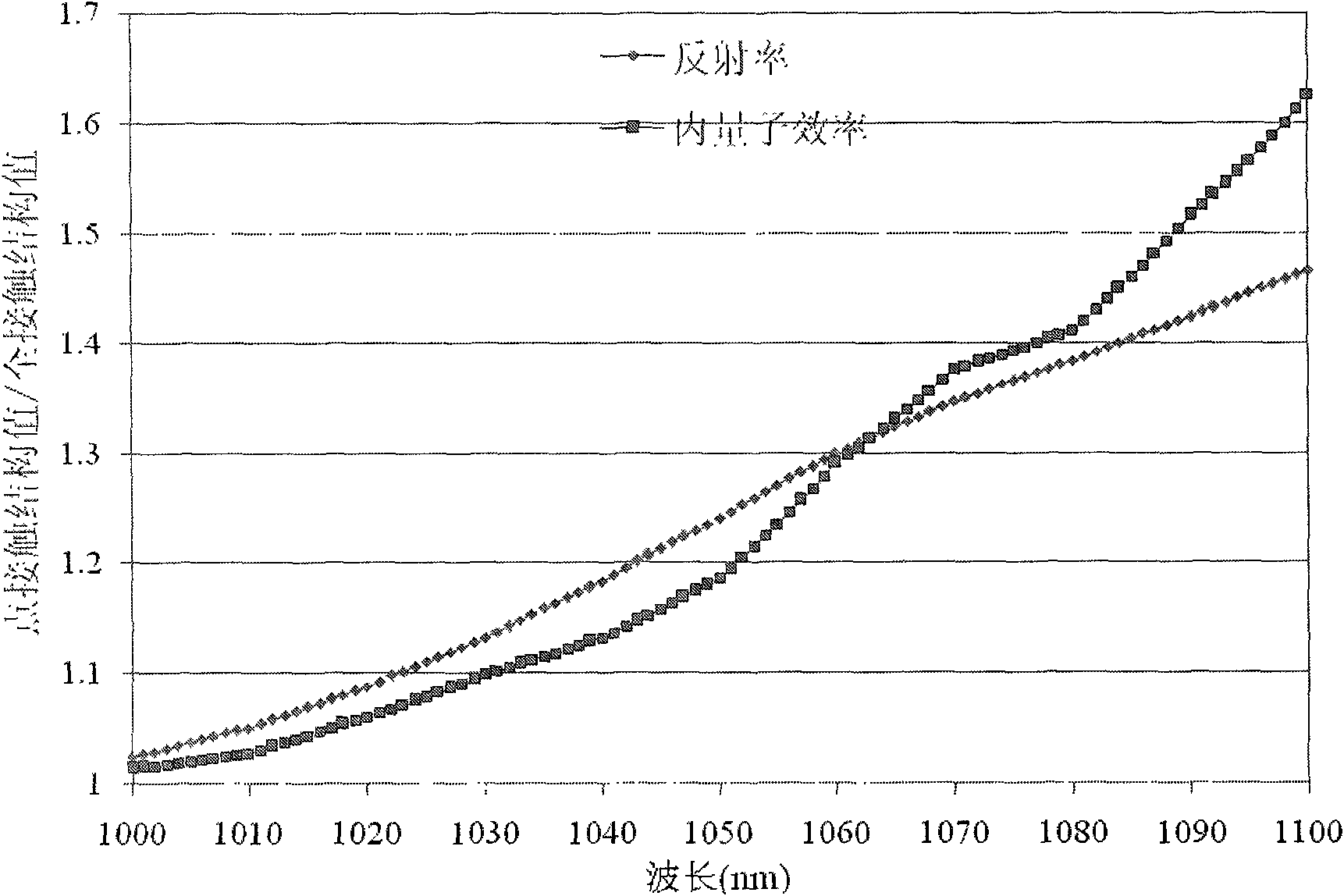Method for preparing N-type crystalline silicon solar cell with aluminum-based local emitters on back side
A technology of solar cells and emitters, which is applied in the field of solar cells, can solve the problems of increasing the difficulty of printing and positioning twice, increasing the amount of diffusion of metal elements, reducing the absorption of long-wavelength sunlight, and reducing the thermal expansion coefficient. , reduce the contact area, reduce the effect of composite area
- Summary
- Abstract
- Description
- Claims
- Application Information
AI Technical Summary
Problems solved by technology
Method used
Image
Examples
Embodiment 1
[0057] The preparation method of the N-type crystalline silicon partial aluminum back-emitter solar cell provided in this example: Select an N-type silicon wafer and perform surface texturing first, then use phosphorus diffusion to form a front surface field, and remove the phosphorus formed during the diffusion After phosphosilicate glass, a passivation film is deposited on the front surface, and then the silicon wafer is chemically polished on the back to remove the N+ layer formed on the back when phosphorus is diffused, and then the passivation film is deposited on the back, the back is partially opened or grooved, and the back wire Screen-print aluminum layer or silver-aluminum layer, then print silver paste on the front surface, and finally sinter once to form the ohmic contact between the local P+ layer on the back and the front and rear surface electrodes.
Embodiment 2
[0059] The preparation method of the N-type crystalline silicon partial aluminum back-emitter solar cell provided in this embodiment includes the following steps:
[0060] (1) Select N-type silicon wafers for surface texturing
[0061] For N-type monocrystalline silicon wafers, surface texturing is carried out at a temperature of 75-90°C in 0.5-5% by weight sodium hydroxide deionized aqueous solution; for N-type polycrystalline silicon wafers , in a mixed solution with a volume ratio of nitric acid, hydrofluoric acid and deionized water of 1 to 2:0.5 to 1:1, surface texturing under the condition of 5 to 15°C;
[0062] (2) Phosphorus diffusion forms the front surface field
[0063] The textured silicon wafer is diffused in a tubular double-sided manner using a phosphorus oxychloride liquid source to form a front surface field;
[0064] (3) Removal of phosphosilicate glass
[0065] After the phosphorus is diffused, the silicon wafer is immersed in hydrofluoric acid with a vol...
Embodiment 3
[0087] The preparation method of the N-type crystalline silicon partial aluminum back-emitter solar cell provided in this embodiment includes the following steps:
[0088] (1) Surface texturing
[0089] For (100) single-crystal N-type silicon wafers, use sodium hydroxide deionized aqueous solution containing 5 to 10% isopropanol or alcohol by volume to carry out single-sided etching under heating conditions (two pieces parallel to each other) insert together in the flower basket groove), make positive pyramid light-trapping structure, the weight percent content of above-mentioned sodium hydroxide aqueous solution is 0.5~5%, heating temperature is 75~90 ℃, the silicon wafer after the surface texturing is 10 % dilute hydrochloric acid for 2 minutes, rinse with deionized water, and set aside;
[0090] For polycrystalline N-type silicon wafers, use a mixed solution of nitric acid, hydrofluoric acid and deionized water with a volume ratio of 1 to 2:0.5 to 1:1 to react at 5 to 15°C...
PUM
| Property | Measurement | Unit |
|---|---|---|
| depth | aaaaa | aaaaa |
Abstract
Description
Claims
Application Information
 Login to View More
Login to View More - R&D
- Intellectual Property
- Life Sciences
- Materials
- Tech Scout
- Unparalleled Data Quality
- Higher Quality Content
- 60% Fewer Hallucinations
Browse by: Latest US Patents, China's latest patents, Technical Efficacy Thesaurus, Application Domain, Technology Topic, Popular Technical Reports.
© 2025 PatSnap. All rights reserved.Legal|Privacy policy|Modern Slavery Act Transparency Statement|Sitemap|About US| Contact US: help@patsnap.com



